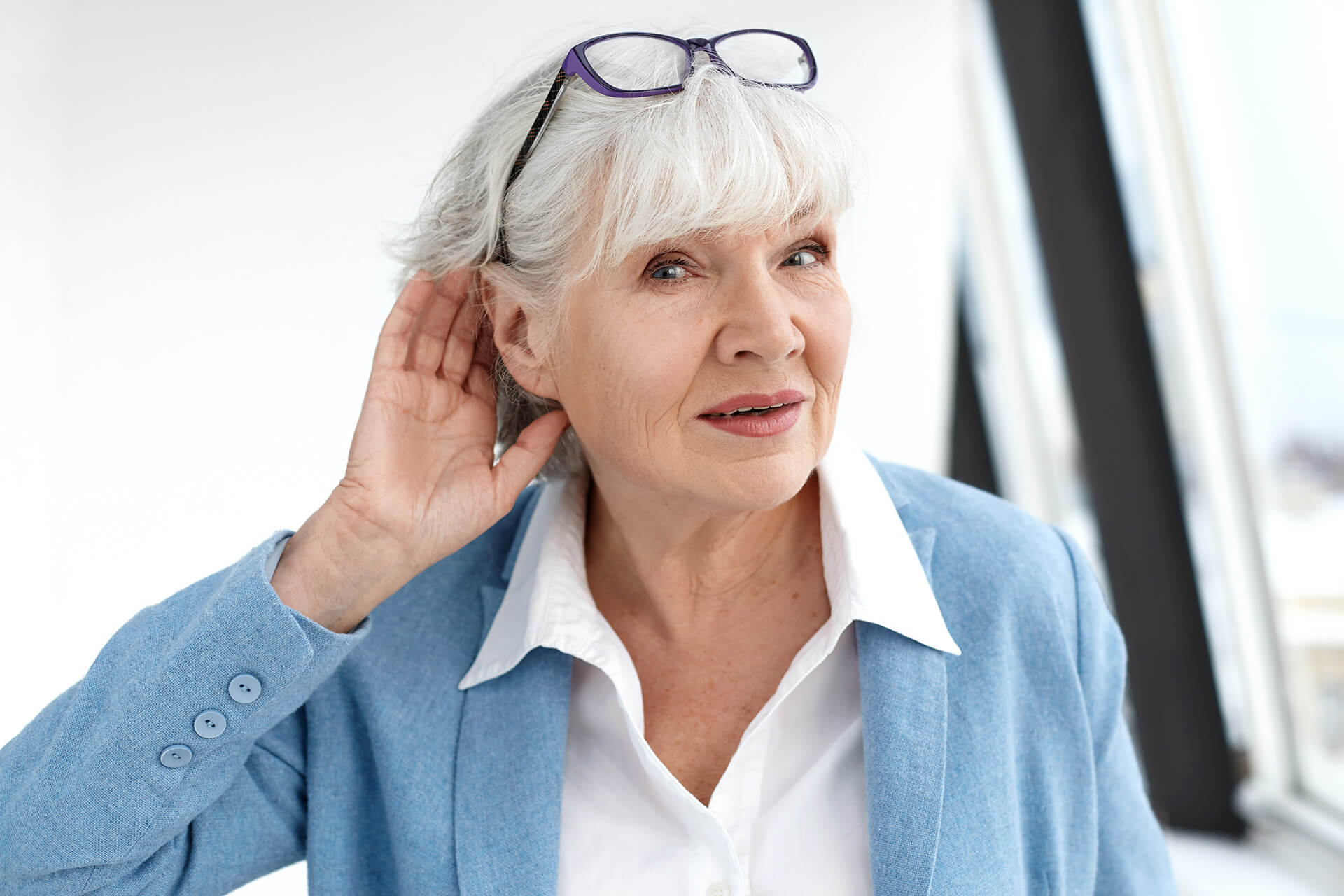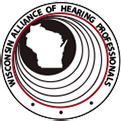Hearing loss is the third most frequent chronic physical ailment in the United States, outnumbering diabetes and cancer by two to one. Hearing loss affects 48 million Americans, or around 20% of the population, which is 10 million more than the population of California and almost 20 million more than the population of Texas.
Table of Contents
Age-related Hearing Loss or Presbycusis
In our search for the answer to the question of “Which hearing loss is most common in US?” we’ll start with Age-related Hearing Loss or Presbycusis. Approximately one in three adults in the United States between the ages of 65 and 74 has hearing loss, and almost half of those older than 75 have difficulties hearing, according to the National Institute on Deafness and Other Communication Disorders.
Presbycusis (age-related hearing loss) is the progressive loss of hearing that most of us experience as we become older (the most typical problem that older and elderly people face). Having it makes it difficult to comprehend and follow a doctor’s instructions, respond to warnings, and hear phones, doorbells, and smoke alarms, etc. Hearing loss can make it difficult to enjoy conversations with family and friends, which can lead to feelings of isolation.
Hearing loss due to age is most commonly experienced in both ears, and both ears are affected equally. If you have age-related hearing loss, you may not notice you’ve lost some hearing abilities because the decrease is gradual.
Statistically, hearing loss is more common in those over the age of 80, and adult males in their 50s are three times more likely than women of the same age to suffer hearing loss, but as they become older, the rates of hearing loss grow more equal between the sexes. Women may have more trouble hearing at lower frequencies as they get older than males. Hearing loss in the high frequencies is the most common symptom of age-related hearing loss.
Age-related hearing loss can be caused by a variety of factors. Changes in the inner ear are the most prevalent cause, although it can also be caused by alterations in the middle ear or complicated changes throughout the nerve routes from the ear to the brain. It’s also possible that certain medical problems and drugs play an impact.
Hearing Loss Isn’t Just an Older Generation Condition
In the United States, about three out of every 1000 children is born with a measurable amount of hearing loss in one or both ears. According to regular hearing exams, one in every eight Americans (30 million) aged 12 and older has hearing loss in both ears.
Disabling hearing loss affects 2% of Generation-X, and among baby boomers, the figure rises to 8% and a half.
Noise-induced Hearing Loss
Another addition to answering our question from the beginning “Which hearing loss is most common in US?” is Noise-induced Hearing Loss. It occurs when the inner ear’s hair cells are exposed to loud noise over an extended period of time, they become damaged and die. You lose your capacity to hear when these hair cells begin to deteriorate.
Some occupations are more likely to cause noise-induced hearing loss than others. Military personnel, musicians, kindergarten teachers, manufacturing employees, and construction workers are at a higher risk of acquiring noise-induced hearing loss. Listening to loud music at live events or through headphones might cause hearing damage.
Target shooting and hunting, snowmobiling, listening to music at a high level through earbuds or headphones, performing in a band, and attending loud concerts are all activities that might put you at risk for NIHL. Lawnmowers, leaf blowers, and woodworking equipment may all produce harmful sounds in the house.
Because hearing loss is a slow process, you may not realize it. When a loved one suffers from age-related hearing loss, family members are usually the first to notice.
What Are the Symptoms and Consequences of NIHIL?
When you are exposed to loud noise for an extended length of time, your hearing may begin to deteriorate. Because noise-induced hearing loss is generally gradual, you may not notice it or disregard the indicators of hearing loss until they become more severe.
Sounds may become distorted or muffled over time, making it difficult to understand others when they speak or forcing you to crank up the television volume. Hearing loss can occur as a result of NIHL damage mixed with aging, and you may require hearing aids to help you hear, converse, and engage more fully in daily activities.
Extremely strong bursts of sound, such as gunshots or explosions, can rupture the eardrum or injure the bones in the middle ear, resulting in NIHL. This kind of NIHL can be both immediate and long-term.
Tinnitus is a ringing, buzzing, or roaring sensation in the ears or brain caused by loud noise exposure. Tinnitus may fade with time, but it can also persist permanently or intermittently throughout a person’s life. Tinnitus and hearing loss can affect one or both ears.
A transient hearing loss might occur after being exposed to an impulse or continuous loud noise for 16 to 48 hours. However, a recent study reveals that, while hearing loss appears to be disappearing, there is still a risk of hearing loss.
Cost of Hearing Loss Therapy
Over the course of a patient’s lifetime, the cost of hearing loss is projected to be $297,000. Between 2002 and 2030, the overall cost of hearing loss therapy is expected to climb fivefold, from $8.2 billion to $51.4 billion in the first year.
An estimated 15% of persons over the age of 18 in the United States, or 37.5 million people, have some hearing loss, while another 28 million might benefit from hearing aids. Hearing loss, on the other hand, differs by state. New Jersey, for example, has the lowest hearing-impaired population in the country, and West Virginia is at the top of the list.
Alaska offers a program that provides deaf and hard-of-hearing residents with a variety of resources and services. The Deaf Navigator program also helps Deaf people find long-term jobs and housing. Former Delaware Governor Jack Markell signed two bills in 2012 to improve the newborn hearing screening procedure, which allows parents to learn if their kid has hearing loss soon after delivery.
Kansas University has developed a gene therapy strategy for restoring hearing by assisting in the regeneration of inner ear hair cells. Clinical studies were conducted in 2019.
Hearing Loss Workers Compensation Benefits
The Workers Compensation Program was established in 1911 to encourage employers to make the workplace safer by requiring safety programs and the use of safety devices.
Since 1911, there have been over 2.5 million workers’ compensation claims filed. Hearing loss workers’ compensation claims now rank #3 in the number of occupational diseases claims filed.
Hearing loss workers’ compensation benefits are largely undiscovered benefits covering hearing health care, which is often uninsured. Many health insurance policies and programs like Medicare do not cover hearing aid purchases but workers’ compensation can.
It also pays for the disability of hearing loss just as it does for the loss of eyesight or other injuries.
Aging populations, advances in technology, and greater sensitivity to hearing loss are bringing more attention to financing hearing health care. For the most part, those who qualify for hearing loss workers’ compensation benefits are retired hearing-impaired workers who live on fixed incomes.
Always feel free to ask Johnson Law Offices about the process, the law, or an individual case. The legal, medical, and audio-metric questions that come into play in a hearing loss workers’ compensation claim can be complicated.
The claims require attention to detail mixed with an ability to work well with hearing-impaired retirees and their families, especially spouses, and their hearing health care professionals.
Sources
- https://www.who.int/news-room/fact-sheets/detail/deafness-and-hearing-loss
- https://www.healthyhearing.com/report/52814-Hearing-loss-statistics-at-a-glance
- https://www.nidcd.nih.gov/health/noise-induced-hearing-loss
- https://academic.oup.com/jdsde/article/11/1/112/410800
Contact Us
If you, or anyone you know, worked in noise and suffers from hearing loss, please do not hesitate to contact us.
Contact Us


